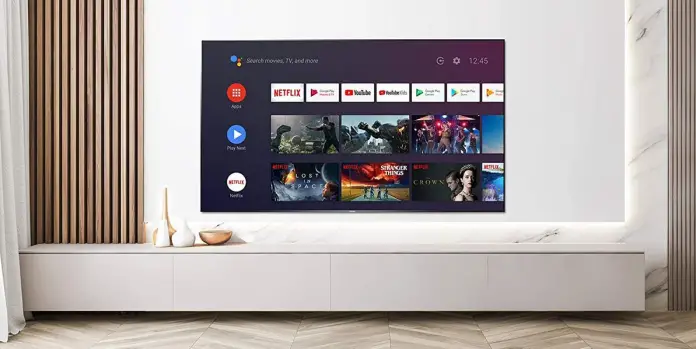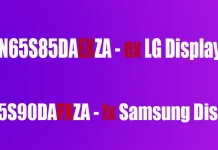The idea of combining a TV and a computer isn’t new. Especially if you look into it in detail, it turns out that a TV is just a monitor with a TV tuner.
In my youth, however, a stationary computer was often used as a smart TV, to which a TV tuner was purchased. At that time, the very idea of watching TV programs on a computer seemed to be something special, convenient, and interesting. Not surprisingly, the speed and availability of the Internet were such that it was difficult to use the network for anything other than searching and downloading information, especially since the content in the form of movies and short videos, in fact, was absent. However, geeks have always been famous for trying to combine as many features as possible in one device, so the desire to make a universal device isn’t surprising.
Along with the increasing availability of the Internet, new scenarios of its use have appeared, among which watching entertainment content has become the main one. However, watching television broadcasts today remains the main scenario of television use for many people, despite the fact that more and more often you hear from people that they don’t watch TV.
If you don’t watch TV broadcasts, then what’s the TV for? The answer is obvious and simple, and you all know it very well – to watch content from the Internet. In this, we can be helped by the smart TV, which, in addition to the broadcast TV, can act as a kind of window to the Internet, thanks to its operating system and the ability to install (or have pre-installed) apps.
And herein lies the main risk and potential source of problems.
Closed operating system
The fact is that many manufacturers that have been producing smart TVs for a long time use proprietary operating systems and their developers create apps for such operating systems. Another way – the apps for such TVs are created by the companies, who want their services to be present on the TVs of a particular manufacturer.
Therefore, if the manufacturer suddenly stops supporting a particular service or the relationship between the companies breaks down, in the best case you can lose support for the app updates, and in the worst case after the next firmware update you can find out that your favorite service has disappeared and you can’t install it because it is no longer in the list of available.
In particular, this happened to Samsung Smart TVs, from the menu of which the YouTube app disappeared after the last update.
Moreover, given that neither the manufacturer’s app store nor the operating system itself allows for the installation of apps from third-party sources, the owner of such a TV set has no other options but to endure. And a once convenient feature in the form of smart stuffing becomes a source of negative emotions because of the understanding that nothing can be done.
Incompatibility and lack of versatility
Do you think that’s the end of the reasons not to buy a smart TV? Well, they’re not. There is another one, not the most important, but it can slightly spoil the impression of use, or rather the impossibility of using it. It is the closedness of the operating system or, more often, even the firmware, because of which you may not be able, for example, to synchronize your smartphone of one manufacturer with the TV of another manufacturer, say, to broadcast the contents of the phone to the TV screen.
Not the most used feature, but sometimes very helpful. For example, it happened to me when I was visiting my family, we took a lot of pictures together, and then decided to watch them on the big screen, for which I habitually turned on the broadcast mode and tried to find this mode in the TV, the presence of which is declared by the manufacturer. But there was no way.
It turned out that my phone must be the same brand to do so. But even if it was, it still wasn’t, because the manufacturer of the TV closed its sync service, renaming it and changing the principle of operation, except that the “smart” TV forgot to warn me about it. As a result, I had to look for a cable.
Attempts to unite and create a single standard for such services are made all the time, and often even successfully. The problem is that even if this happens, it isn’t possible to install support for the new standard on an old TV set. And once again, we are left with a broken trough.
So what should we do? There is no clear-cut recipe, and everyone chooses for himself. For someone, the listed reasons and limitations will not matter because of the usage scenario. This is usually the case when smart features are secondary and used occasionally in a very narrow scenario.
Another controversial but outlier becomes buying a smart TV on a universal operating system, which today is de facto Android. But even here there is a risk that the TV manufacturer will stop updating and supporting it, and then, albeit not immediately, but you may again encounter the problems described above.
System performance issues
Another extremely controversial, yet existing phenomenon associated with smart TV firmware is performance, or, to put it another way, lags.
Yes, when you first buy a new TV with smart features, as a rule, it is happy with its fast operation and responsive interface, and it seems that this will always be the case. But, alas, the capabilities of the services are growing, which means an increase in the volume of apps of these services, and the smart TV is still the same as it was three years ago, at the time of purchase, and its processor and RAM can no longer cope with the increased appetite of apps.
In addition to this, the app publisher soon becomes less interested in supporting the rapidly aging platform, and the apps proliferating on your TV start working more and more slowly, the interface isn’t so responsive, and the waiting time for opening a favorite service becomes almost longer than watching content from the service itself. Well, what kind of pleasure is there, the main thing here isn’t to run the remote control into the screen.
So, what to do?
In this regard, the most logical way out of the situation with minimal risks looks like either buying a TV with an operating system without third-party commercial shells, on so-called pure Android, or another option, which seems to be the most logical and safest. This is buying a TV without any smart features at all and then buying a set-top box or a TV stick, with which you can turn any TV into a smart TV. Even if one day the set-top box or stick turns into a pumpkin, you can simply replace them with something more relevant and devoid of manifested flaws, without having to replace the entire TV.
n addition, if you choose a set-top box or stick with an open operating system with the ability to install third-party apps from third-party sources, you will significantly expand the capabilities of your device, and there will be no problems with synchronization.
I personally did this and bought a TV without any smart features, but with good picture quality, and connected a set-top box and a phone to it.
It turned out that in my case, the TV in terms of smart features went through a path of progress and regression, first becoming smart (buying the first smart-TV and disappointment after a couple of years), followed by the loss of built-in smart features with the purchase of a simple TV.
Which option is up to you? Write in the comments what you think about it. Do you want a TV with built-in smart features or not?






